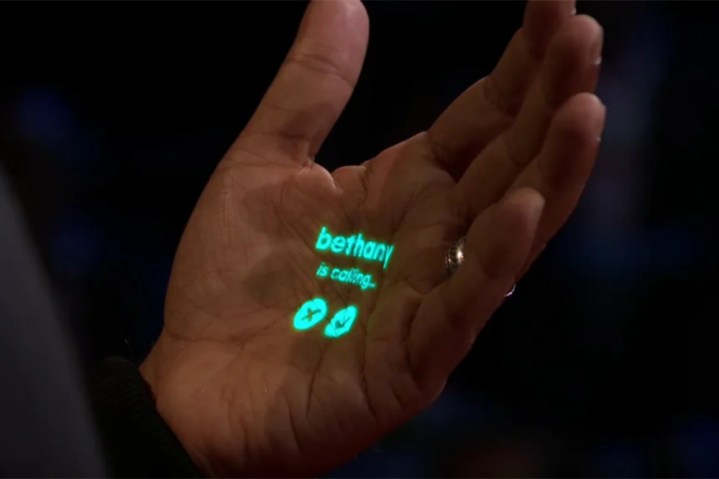It’s fun to imagine what technological breakthrough will eventually replace our smartphones. Will it be AR headsets? Microchips in our brain? Something else entirely? Well, at least according to one company, it may be a small, screenless wearable you carry around in your shirt pocket.
On April 21, leaked footage from an upcoming TED talk revealed photos and videos of the upcoming wearable from Humane — a tech startup led by former Apple employees Imran Chaudhri and Bethany Bongiorno. The full TED talk demoing the Humane wearable is expected to go live on April 22, but even from the early bits we’ve seen so far, it looks like a fascinating (and strange) alternative to the smartphone.
What is the Humane wearable?

Let’s start with an important question — what exactly is this thing? It appears to be a small, screenless gadget that rests in your shirt pocket. At least, that’s how it’s used during the TED talk.
It looks like a small smartphone, but instead of a display on the front, the top portion houses a laser projector. It also has microphones for voice commands, a speaker, a camera, and other sensors that support gesture controls. One of the gestures allows you to tap the device to “wake it up” so you can start issuing a voice command — sort of like pressing the power button on your iPhone to talk to Siri.
It’s also worth noting that Humane’s wearable isn’t an accessory that you pair with your current smartphone. Unlike a smartwatch, Humane’s made it very clear that its wearable is used independently, without a cell phone connection.
OK … but what can it do?
That all sounds plenty interesting, but what does all of this technology do?
A major focus for the Humane wearable appears to be on voice commands/interaction. One of the bigger things highlighted is the “Catch me up” feature. Instead of mindlessly shoving notifications in your face all day long, you can ask the Humane wearable to give you a summary of what you missed. In the demo, we see the device pressed, it’s asked to “catch me up,” and it then provides a breakdown of “emails, calendar invites, and messages” you’ve received.
Another demo shows the Humane device used for voice translations. After saying a phrase in English, the device quickly repeats the phrase back in French — using the same voice of the person who just spoke.
Via the camera on the wearable, you can also use it to scan food items to determine if you can eat something or not — based on your personal preferences and any dietary restrictions. In the demo, after scanning a chocolate bar and asking, “Can I eat this?,” the Humane wearable tells its owner that the chocolate bar “contains cocoa butter” and that “given your intolerance, you may want to avoid it.”
But your voice isn’t the only way you can use Humane’s futuristic gadget. Remember that laser projector I mentioned earlier? One clip shows it projecting an incoming call notification onto a person’s hand, and when they accept the call, it projects the caller’s name, the call duration, and a few controls (such as buttons to end the call or mute your microphone). Presumably, the projector will be able to display other bits of visual info beyond phone calls, though that’s the only example we’ve seen so far.
Is this really the next smartphone killer?

Leading up to this early look at Humane’s wearable, it was being described as an “iPhone killer.” Is this really the device that’ll kill the iPhone and all other smartphones as we know them? Maybe! But maybe not.
There’s impressive tech behind Humane’s wearable, and this is only a very small first look at what it can do. But if this is what’s supposed to be the future of smartphones … I’m not sure it’s a future I’m particularly excited about. It’s an interesting alternative to the smartphone, sure, but is any of this really more convenient/practical than whipping out an iPhone 14 Pro or Samsung Galaxy S23 Ultra?
It’s a big question — and one that’ll be answered in due time. Humane will be revealing more information about its wearable later this year, and if you’re interested, you can sign up for the waitlist on its website.
Editors' Recommendations
- Bing’s AI chatbot is now on your Android phone’s keyboard — here’s how to get it
- AI is making a long-running scam even more effective
- The Galaxy S23 just got a crazy AI feature that clones your voice
- AI could turn your phone into a mobile health lab
- Phones could one day identify you by your grip




